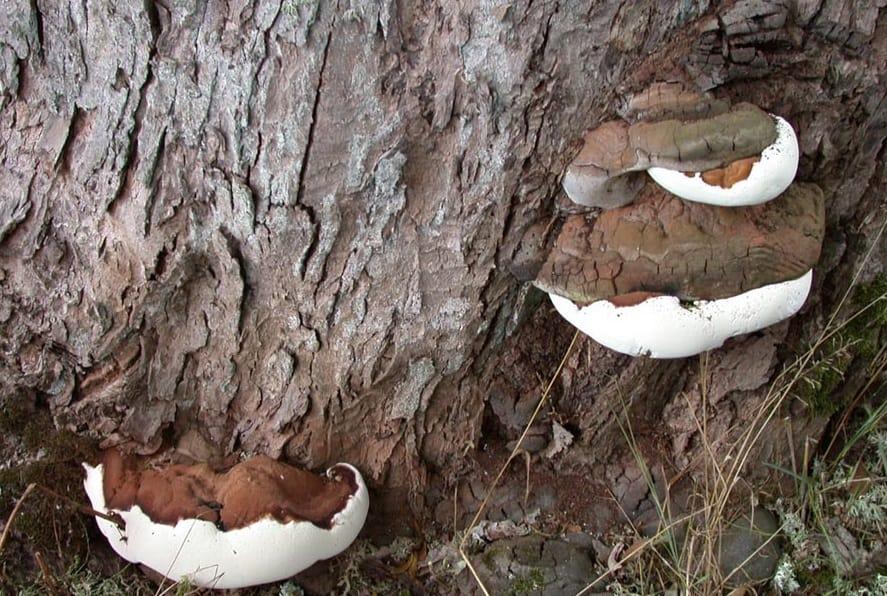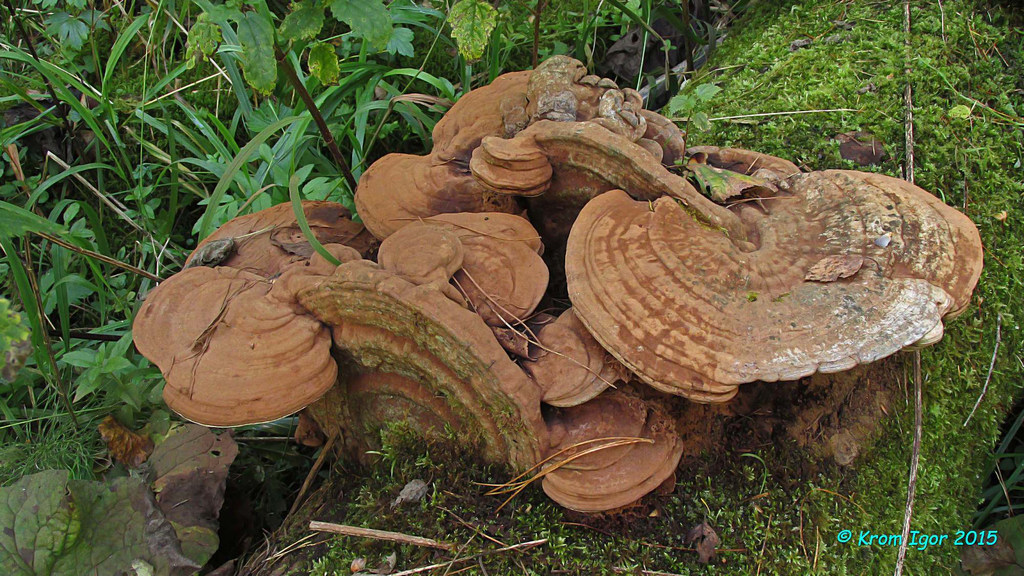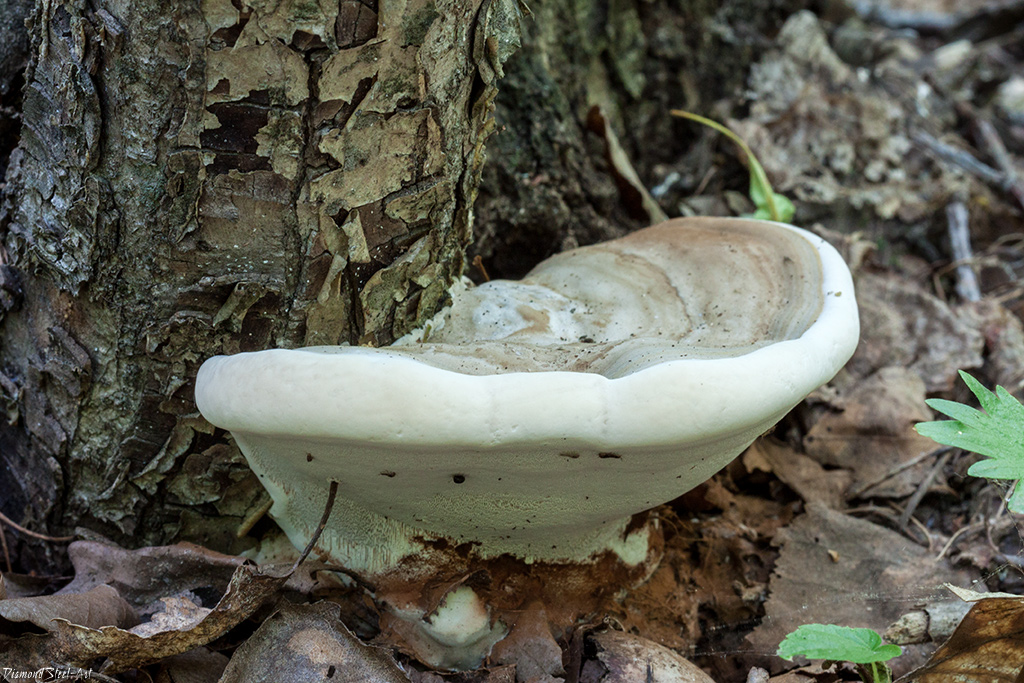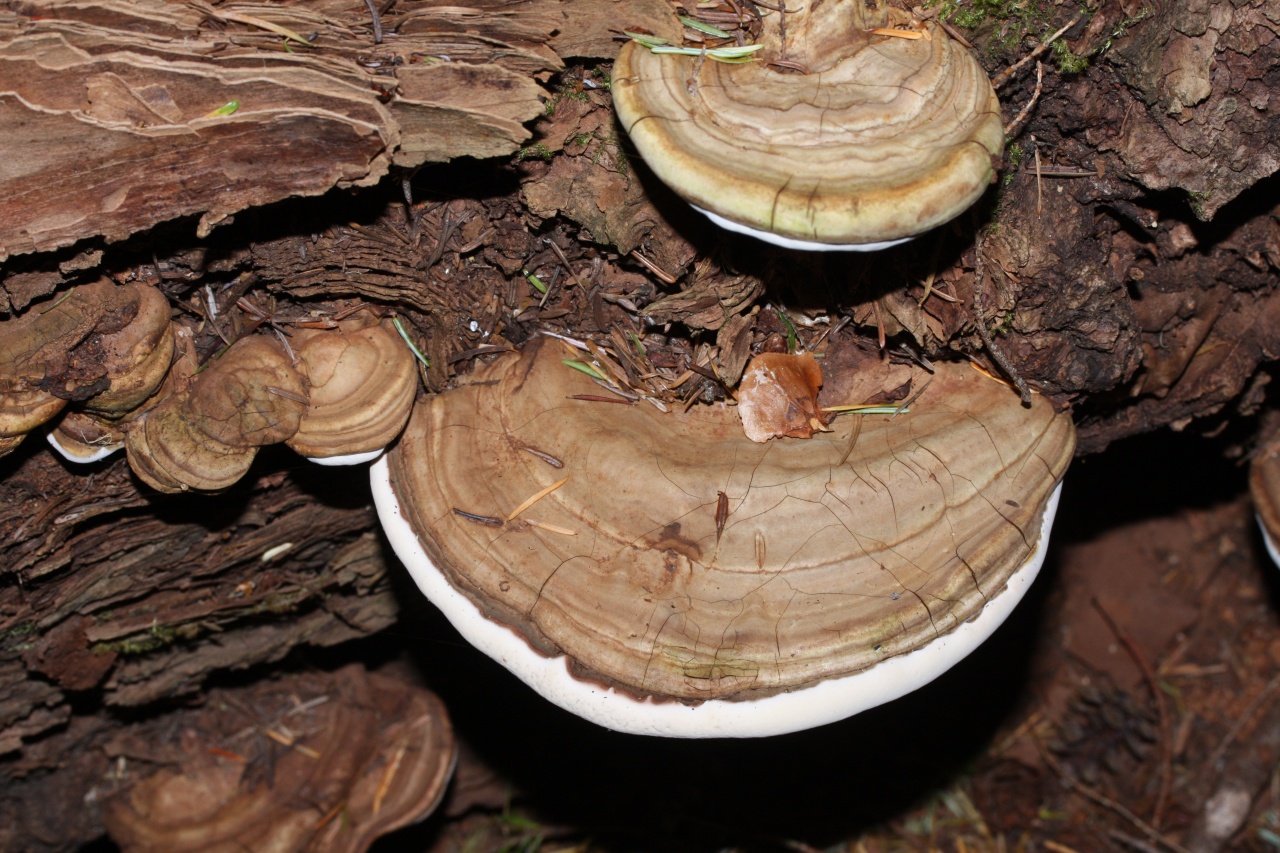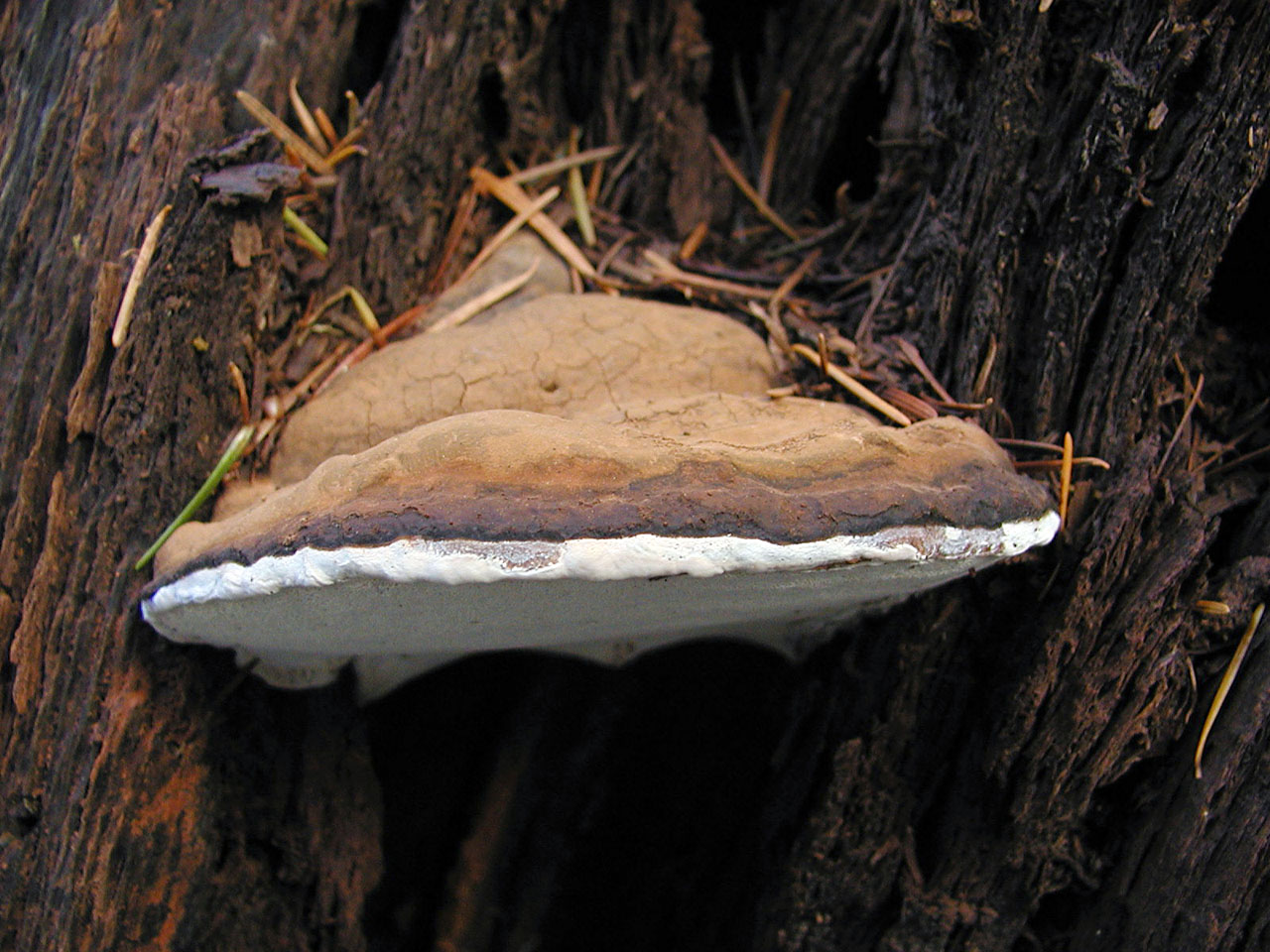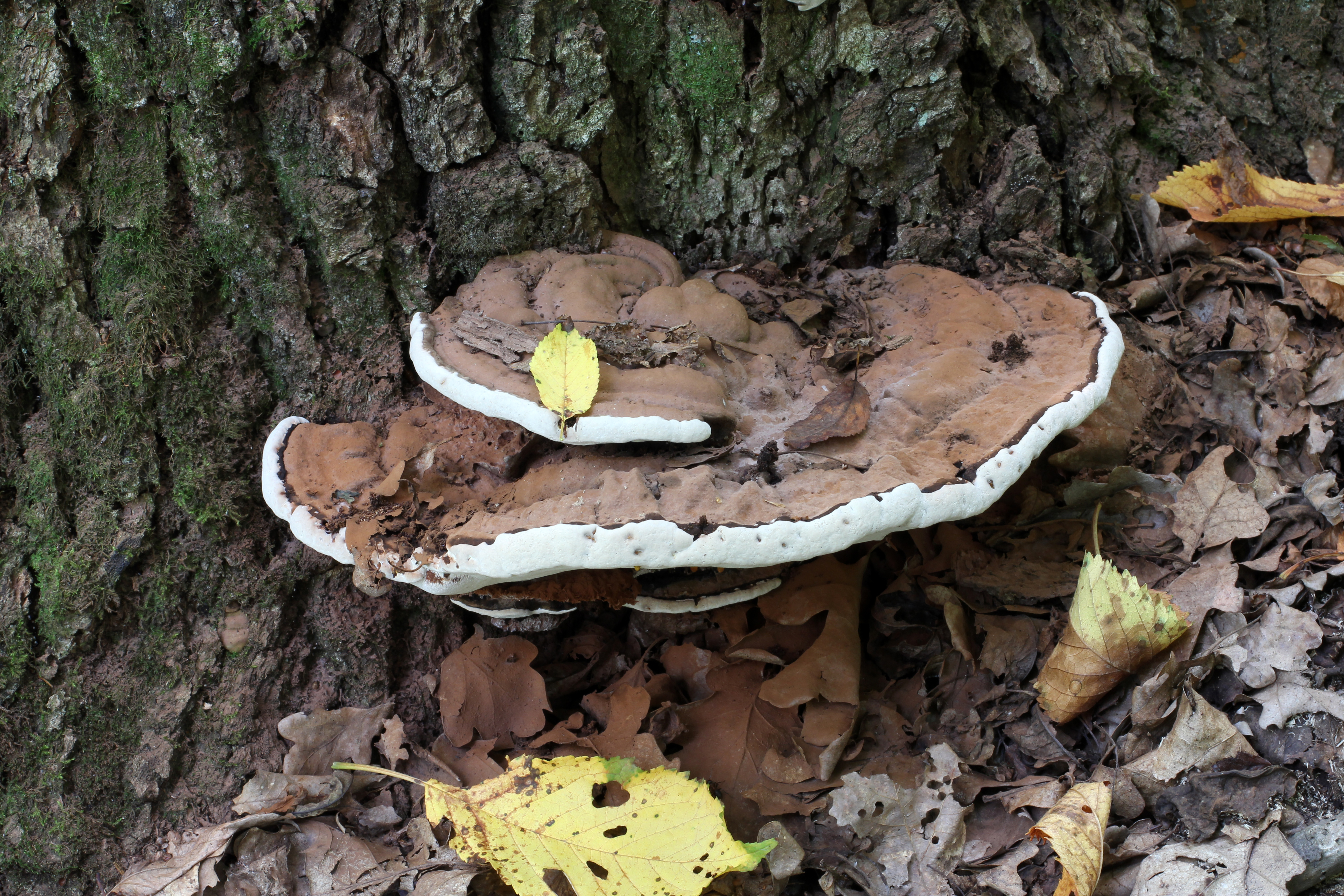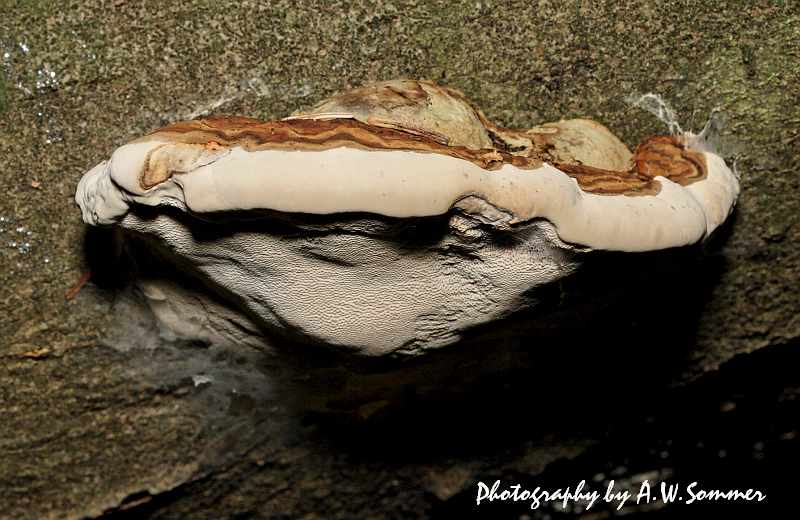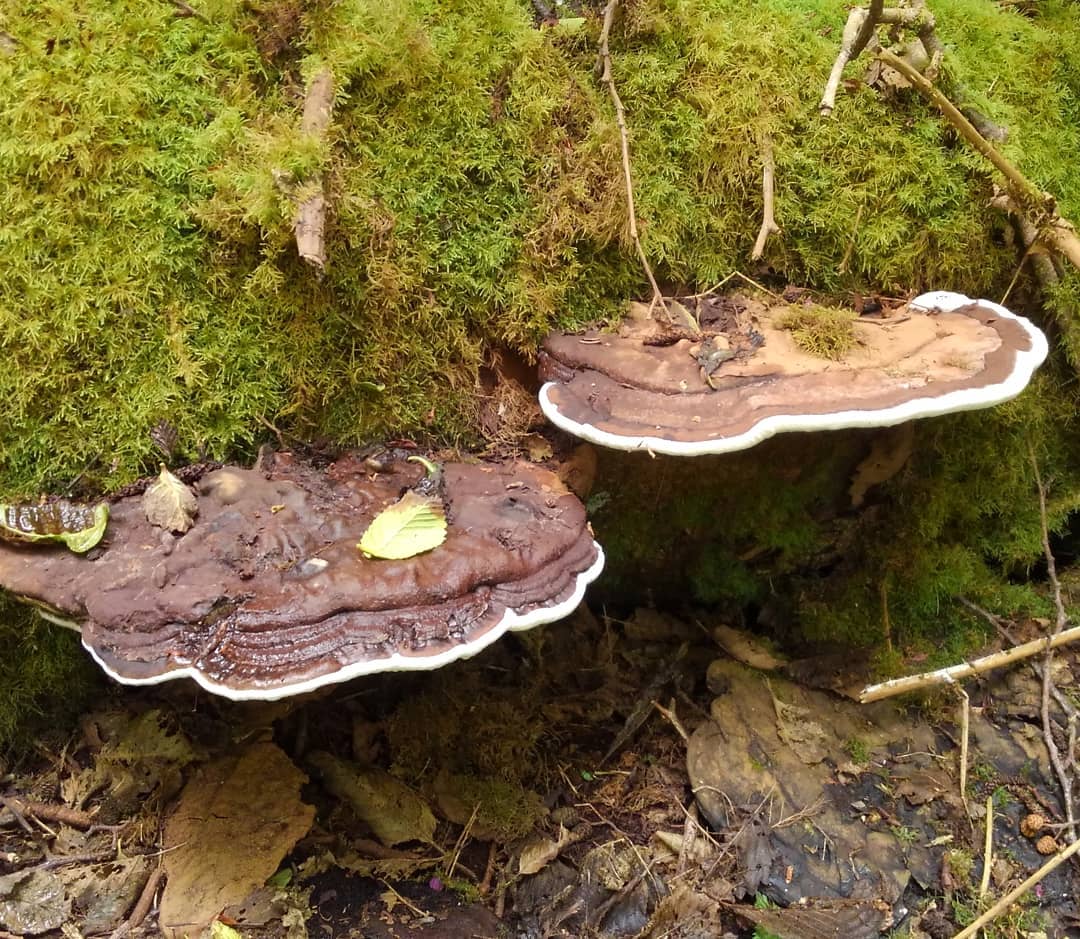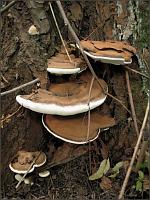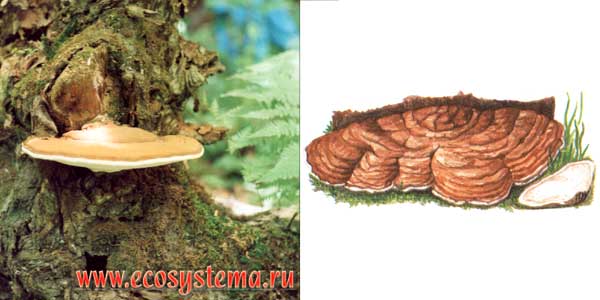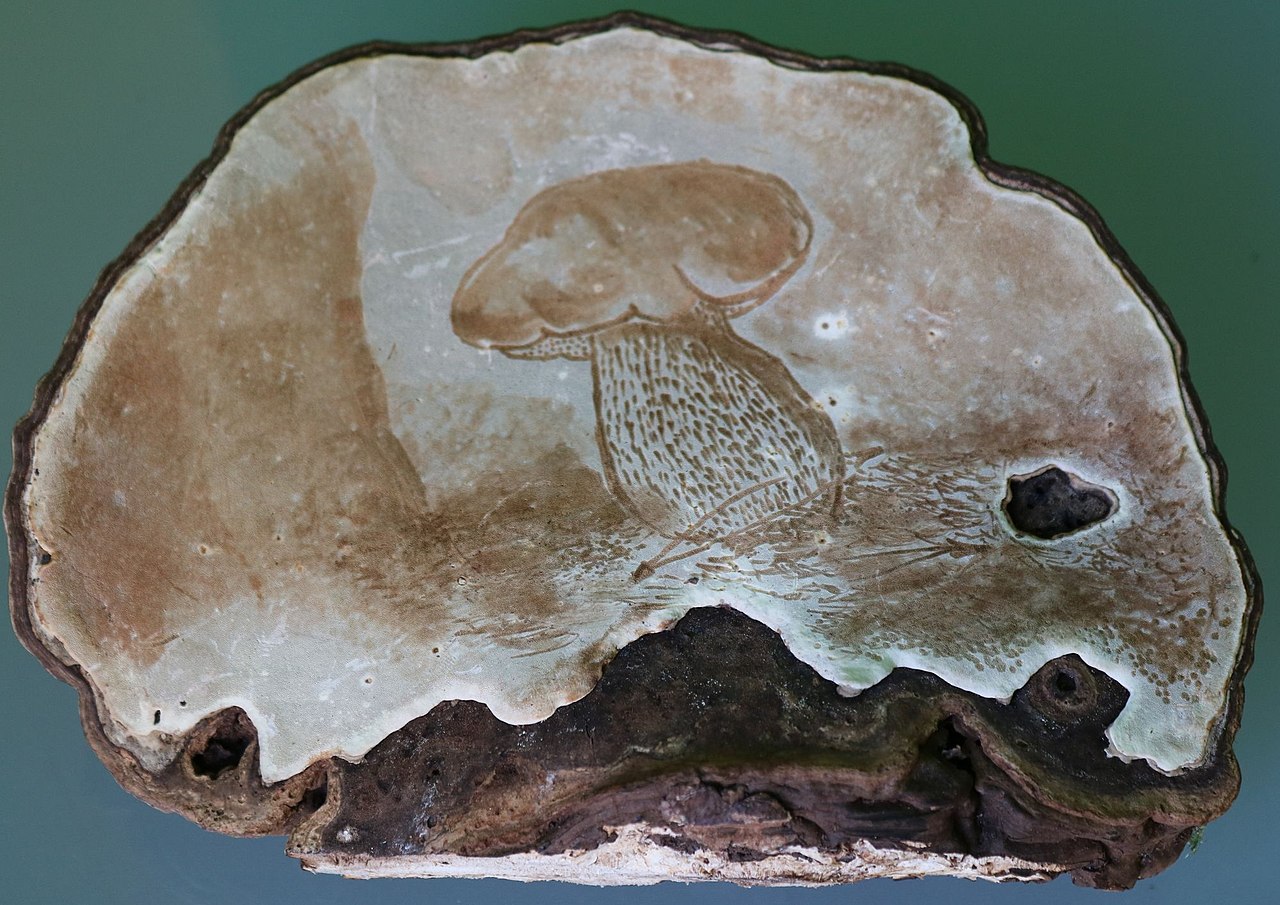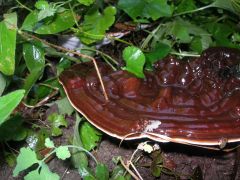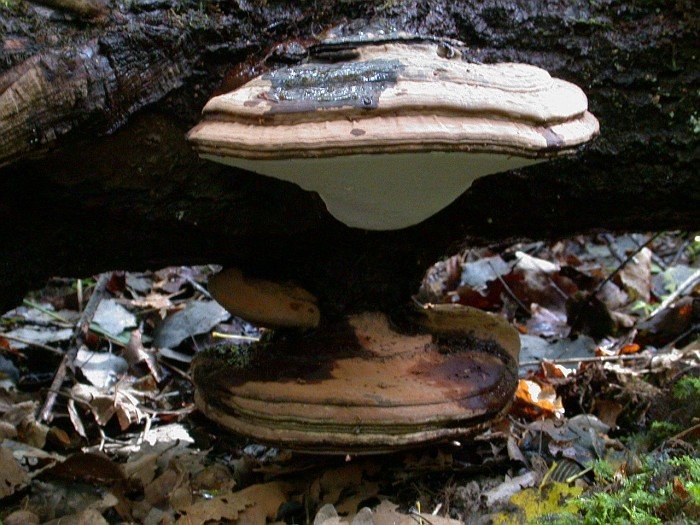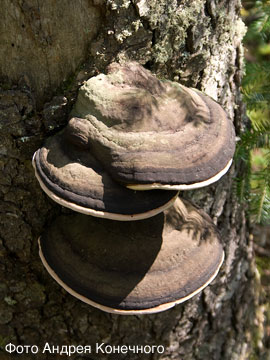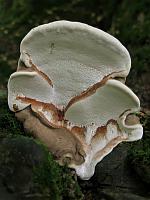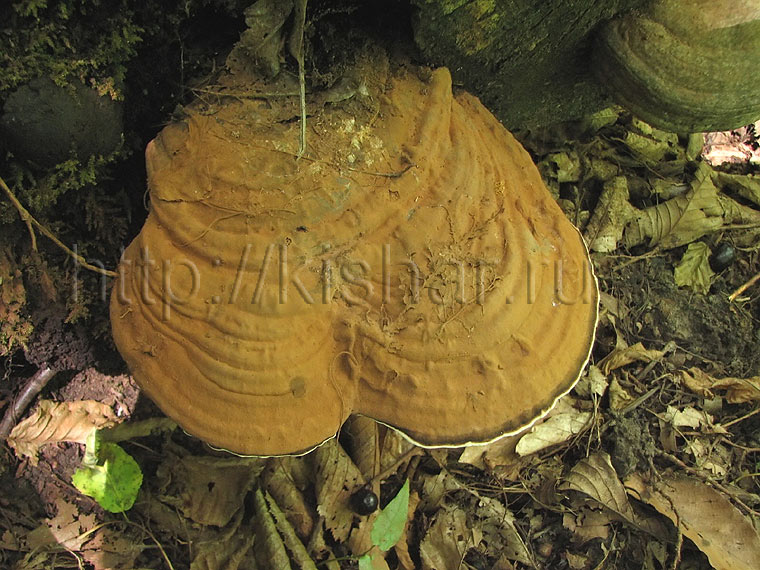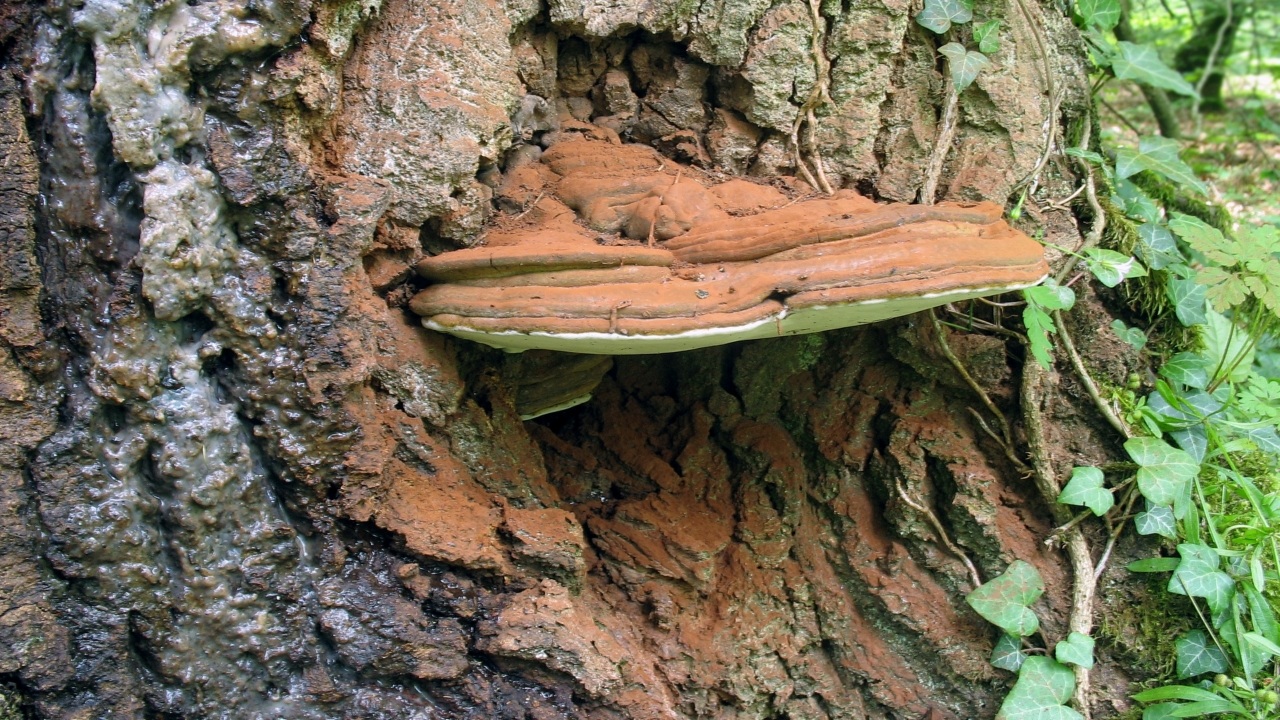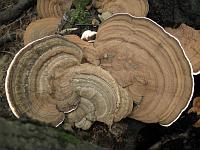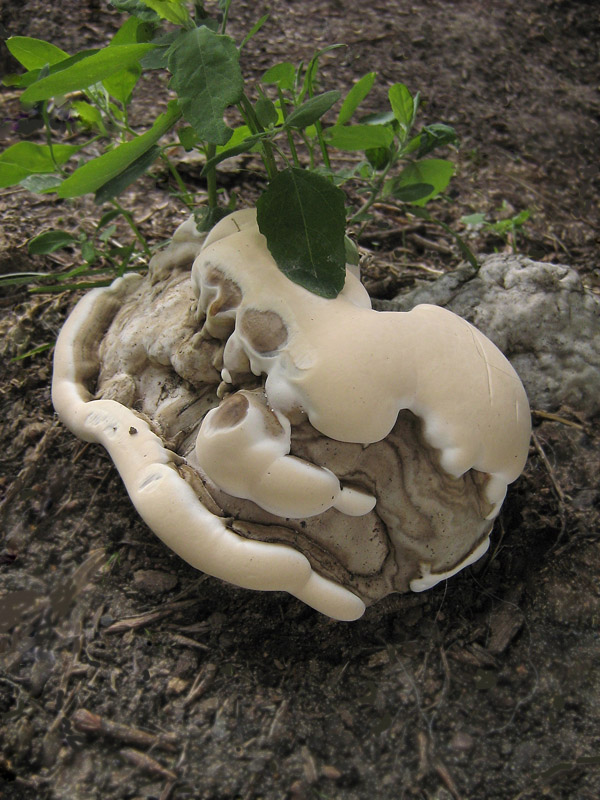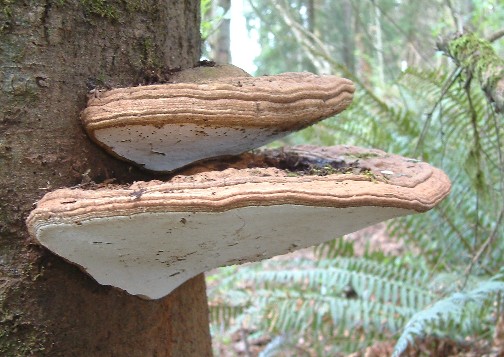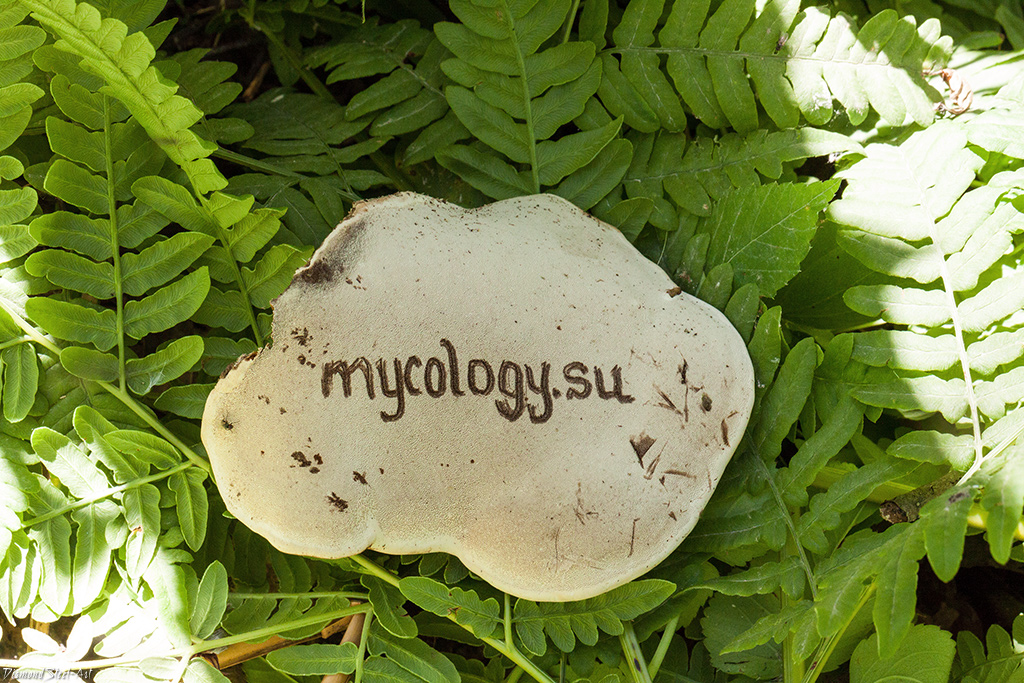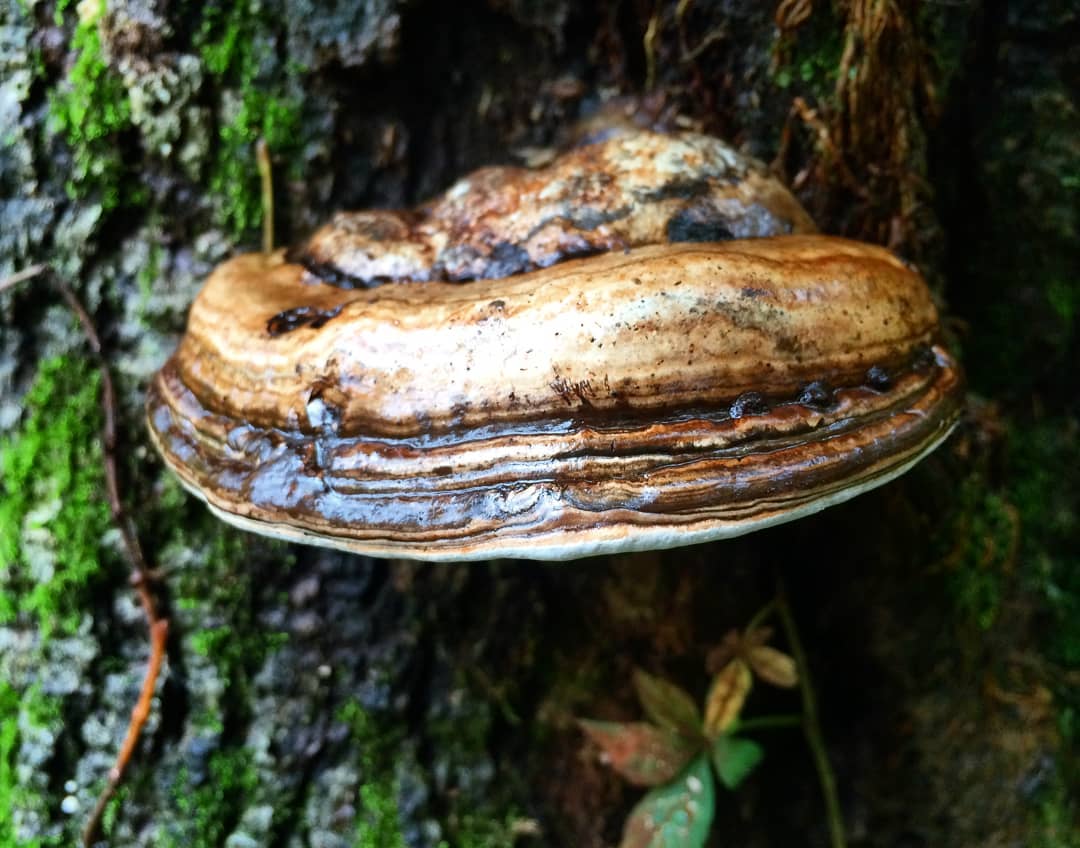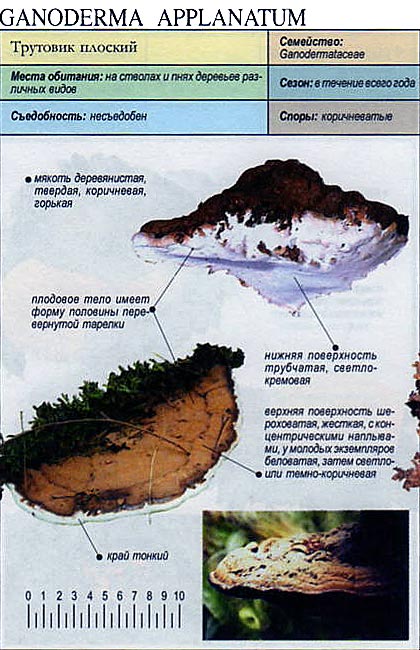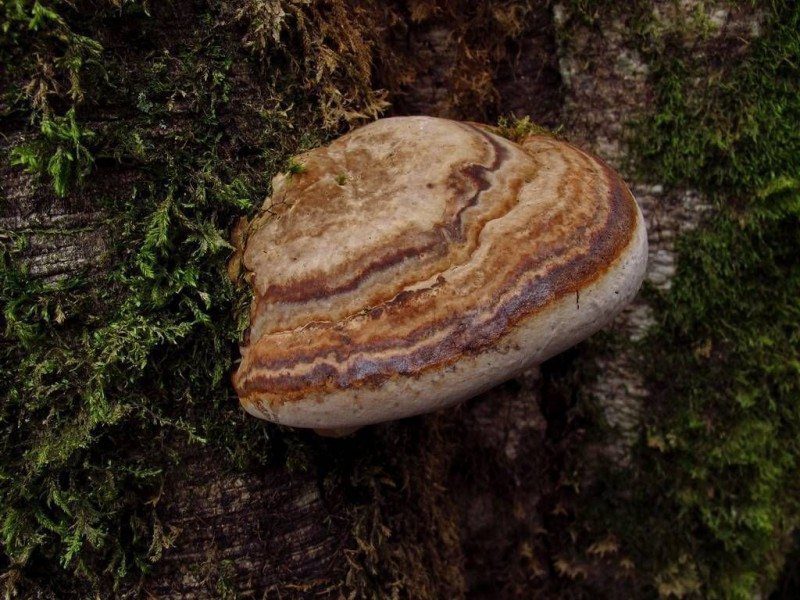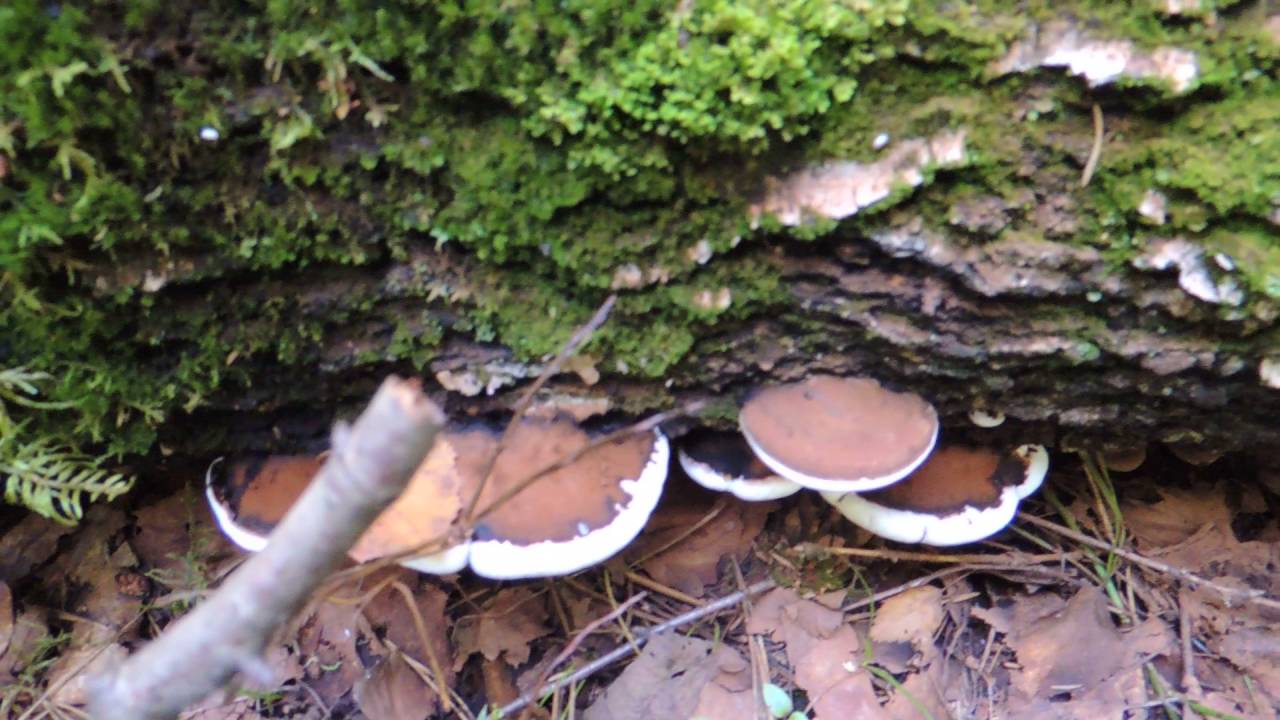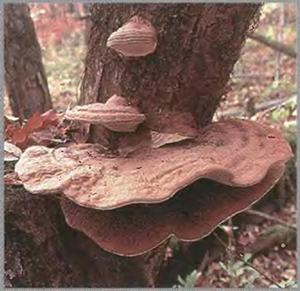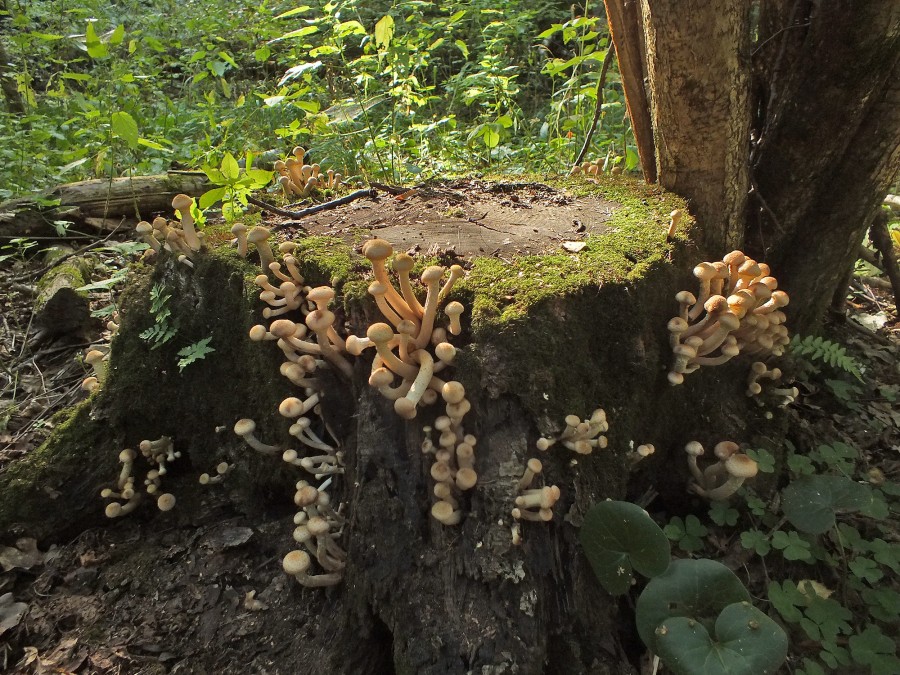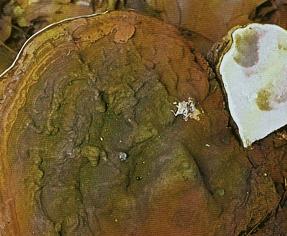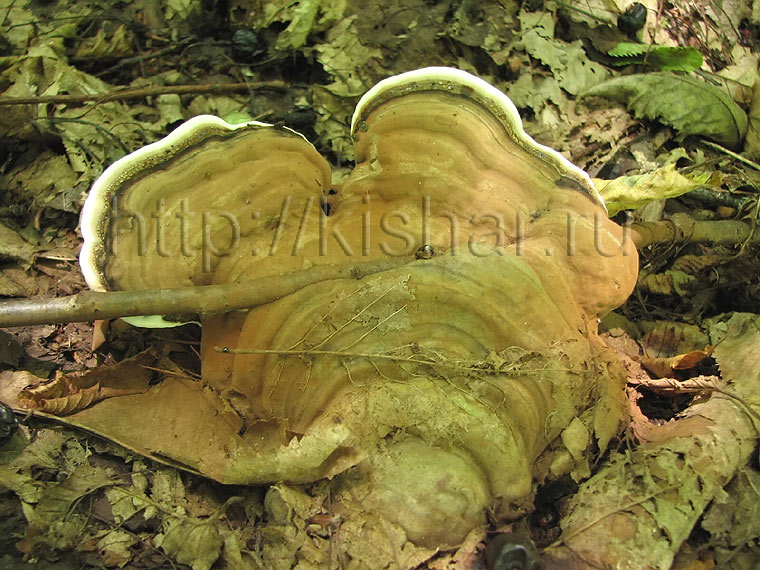Chemical composition, taste, benefits and possible harm
The chemical composition of tinder fungi, like many edible mushrooms, is rich and depends on the place of growth. They are 92-95% water, so their caloric content is only 20-24 kcal per 100 g.
The dry matter contains:
- highly nutritious protein;
- dextrins;
- glycogen;
- enzymes;
- vitamins;
- mineral salts.
Young sulfur-yellow tinder fungi have a pleasant taste and smell. The high protein content and excellent taste of young mushrooms allow them to be used in cooking, including as a meat substitute in vegan cuisine.
The following cases of the harmful effects of tinder fungus are known when they are eaten:
- laxative effect, nausea;
- allergic reactions, contact edema;
- visual hallucinations in children.
Toxic manifestations can be associated with the use of other similar types of tinder fungus. Only young fruit bodies growing on deciduous trees can be eaten. Children are not recommended to give dishes containing sulfur-yellow tinder fungus because of the possible risks of poisoning. In addition, mushrooms are difficult to digest, and in order for them to be absorbed, they must be chewed thoroughly.
Description of the genus of mushrooms and its main varieties
Ganoderma is the general name for the genus of mushrooms, which has more than 80 species. The most common are:
- Ganoderma lucidum - Lacquered polypore, or Reishi, or Lingzhi;
- Ganoderma applanatum - Flat polypore (applanatum);
- Ganoderma philippii is a plant pathogen;
- Ganoderma tsugae - Coniferous polypore.
Ganoderma applanatum
Ganoderma lucidum
Ganoderma tsugae
Ganoderma philippii
Mycologists divide this genus into 2 sections: mushrooms with a shiny cap and fruiting bodies with a glossy surface. All representatives of Ganoderma are distributed throughout the world and are found on any continent.
The most useful and well-known mushrooms are Ganoderma lucidum (varnished tinder fungus), which are also called reishi, lingzhi, lin-chi, mannentake. This species belongs to the genus Ganoderma of the Polyporovye family.
Reishi is a saprophyte that grows well on dead wood, on dying or weakened trees. Most often, lingzhi can be found on oak, elm, beech, alder, less often on conifers. Prefers stumps or the lower part of the trunk closer to the ground. Traditionally, the place of growth of lacquered tinder fungus is the southern and southeastern regions of Asia, especially China, Korea and Japan. Because of this, it is believed that the high price of this mushroom is associated precisely with its low prevalence.
The Reishi hat is glossy, its diameter ranges from 3 to 18 cm. The shape of the mushroom is like a fan, round, almost kidney-shaped. Edges are pointed, sometimes bent down. The leg has a length of 5 to 25 cm, it is cylindrical, uneven, the skin is dense, glossy. The color, as a rule, corresponds to the color of the cap.
Reishi pulp is tough, like a sponge or cork, as it matures, it becomes harder, almost wood. It has almost no smell and taste.
Important! The appearance of the varnished tinder fungus, as well as its composition, is highly dependent on the substrate. No other mushroom whose stem is on the side of the cap is as long as the Reishi mushroom demonstrates.
Morphological features
Basidiomas are perennial, solitary (occasionally grow in two), located one under the other, sessile, greatly varying in size depending on the habitat, usually basidiomas reach 50-400 mm in diameter or more (occasionally more than 600 mm) and 15-120 mm in thickness at the base. Basidiomas are flat, half, sometimes lingually elongated, so that the width exceeds the length, very rarely almost hoof-like or nodular. The surface of the cap is uneven, wavy, often lumpy, covered with a thin, soon hardening and thickening crust, shiny on the cut, at first whitish-grayish, then darkening, often brown from the spores covering it.
The edge is straight, thin, obtuse or rounded, at first whitish above, gray or leathery-yellow, later the same color with the rest of the surface, sterile below.The tissue is hard, cork, elastic, indistinct, tomentose-fibrous at break, from thin to rather thick, reddish-brown, often with white dotted efflorescence from disseminated bundles of colorless hyphae. The tubules are layered, often with noticeable thin interlayers. The surface of the hymenophore is white, then yellowish, turns brown from touch, becoming darker with age. The pores are entire, rounded, small, 4-6 per 1 mm. The hyphalous system is trimic. Generative hyphae are hyaline, thin-walled, septate, with buckles, poorly visible in the tissue of the basidioma. Skeletal hyphae are brownish, very thick-walled to almost solid, 4-6 µm in diameter, strongly branching. The connecting hyphae are few. Basidia 10-13 × 7-9 μm. Spores are ellipsoidal-ovate, truncated at the apex, 6.5-8.5 × 4.5-6 μm, with a double shell. The spore powder is brown.
Ganoderma for weight loss
Combined with an effective weight loss program, Ganoderma mushroom can be extremely beneficial for those taking it in supplement form. True, its effect here is indirect. Why?
There are many reasons for being overweight and obese. It can be diseases that lead to weight gain, and unhealthy diet. For example, in some autoimmune diseases, weight gradually increases. Indeed, with such diseases, steroid preparations are often prescribed, which lead to extra pounds.
Taking Ganoderma can improve the immune system and, in general, your condition. This, in turn, can lead to an overall improvement in the course of the disease, and therefore to a decrease in the prescribed drugs or a decrease in the dose.
In case of hormonal imbalance, there may also be weight gain. Reishi is an effective means of regulating hormonal balance and thus restoring normal weight.
Excess weight can also be due to water retention in the body due to certain heart diseases or impaired kidney and urinary system function. In this case, the lingzhi mushroom can improve the condition, normalize blood circulation, which will lead to the elimination of excess fluid from the body and, accordingly, to weight loss.
The reasons for excess weight can be listed further. For example, diabetes. Ganoderma can help lower blood sugar levels and normalize weight. The fact is that this mushroom cannot directly help to lose weight, but it is able to protect against diseases and improve the condition in diseases leading to excess weight.
Even if you do not have any diseases, but are overweight, it is important to take drugs with it. This will prevent diseases associated with excess weight.
One should not expect a quick effect from such a technique. The mushroom "works" slowly but surely. First, he "scans" and examines the entire body, finds out where his help is needed in the first place. In simple words, it will first cleanse the body of everything unnecessary: toxins, toxins and other harmful substances.
Such cleansing is extremely important for the normalization of the entire work of the body, for the improvement of metabolism.
During cleansing, the skin may have a rash, irritation, headaches and other symptoms. No need to get scared and stop drinking Ganoderma. Within a month, as a rule, everything returns to normal.
When he has done all the work to cleanse the body, he will gradually "repair" the damaged organs. This process is long and can take two or more years. As they say, in order to cure a disease, you need the time during which the disease lasts, divided by three and get time for the body to recover. And if we consider that many of us begin to think about health many years later after the "wrong" lifestyle, then unfortunately it will not be possible to restore the body completely in a month.
Thus, we can conclude that Ganoderma:
Cleansing the body of toxins and toxins, restores and normalizes metabolic processes in the body;
Helps burn more fat during exercise;
Possessing antioxidant properties, it helps fight free radicals, prevents their negative effects on the body.
It is especially beneficial to take it on an empty stomach in the morning with plenty of water. The first results can be felt within 2-3 weeks of taking it, and after using it within 2-3 months, you will notice an improvement in health.
False doubles
Ganoderma flattened is often confused with another representative of the genus - Ganoderma gum, reishi mushroom, lingzhi, varnished tinder fungus. This type of ganoderma is highly valued in oriental medicine, since it allows you to treat many, even the most complex diseases. There are several more similar mushrooms, photos of which can be seen below and familiarized with the table:
| Species name | Differences | Edibility |
Tinder fungus southern (Ganoderma southern, Ganoderma australe)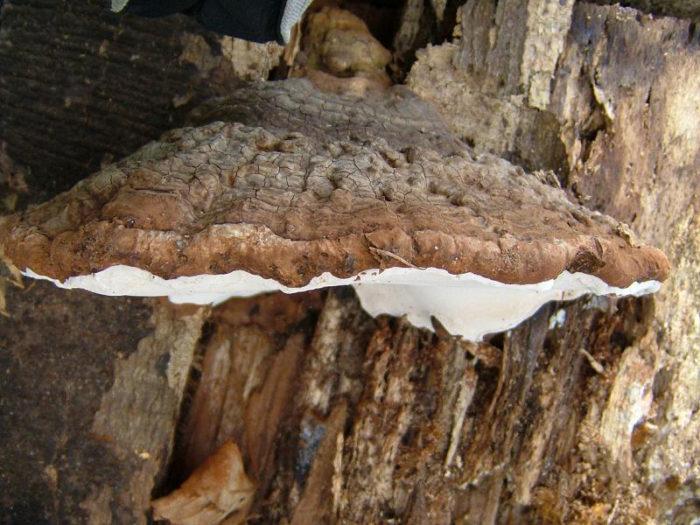 |
It lives only in the southern regions, differs in larger size, glossy cap surface. The hymenophore does not have an interval layer, there are more spores than that of the flat tinder fungus. | Inedible |
Tinder fungus expressive (Ganoderma expressive, Ganoderma adspersum)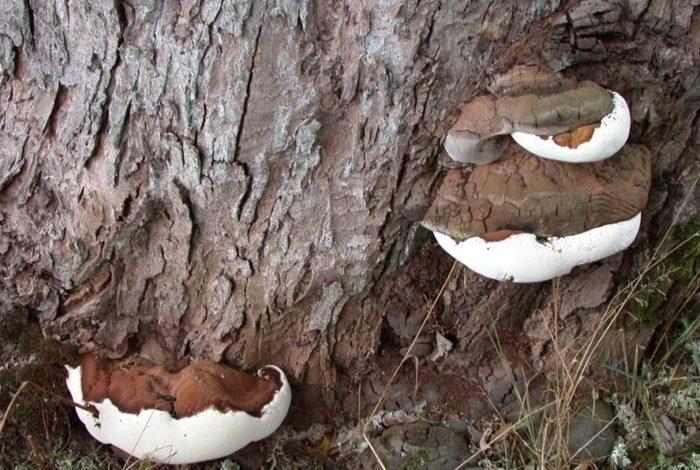 |
Unusual species, practically never found in Russia. Has a more massive, but not flattened fruit body. The spores of the hymenophore are larger than those of the flat tinder fungus. | Inedible |
Application
The mushroom is not used in Western medicine. Popular for making souvenirs with drawings on the lower surface of the fruiting body.
In Chinese and Japanese folk medicine, the flat tinder fungus, along with other representatives of the genus Ganoderma, is used for the prevention and treatment of hepatitis, hypertension, hyperglycemia, chronic bronchitis and bronchial asthma, and cancer.
In China, the flat tinder fungus, along with other medicinal mushrooms, is included in the collection of fortifying action, to increase mental performance, to normalize the blood composition, to prevent and treat nervous diseases, diseases of the cardiovascular system, liver diseases, diseases of the genitourinary system, diabetes, rheumatism, gastritis, ulcers, cancer and other tumors.
On commercial sites, the flat tinder fungus (Ganoderma applanatum) is sometimes mixed with a representative of the same genus, the lacquered tinder fungus (Ganoderma lucidum), known as Reishi. It should be clarified here that reishi is a collective name; in a general sense, about 2000 species of woody mushrooms are called by it. In the treatises of traditional Chinese medicine, there are already six types of reishi: namely, red, black, blue, white, yellow and purple reishi. In the Chinese medical canons, it is believed that the red reishi - the same varnished tinder fungus - has the greatest healing power. The name wild reishi is understood for the most part in the black reishi (Ganoderma sinensis), which is widespread in China, but sometimes this name refers to the flat tinder fungus. True red reishi (Ganoderma lucidum) is a mushroom with a varnished cap and edible pulp, while the woody fruiting body of the flat polypore is not edible.
Laccase, which is secreted by the mycelium of the fungus to break down lignin in wood, is an enzyme with a wide substrate specificity that breaks down phenols and organic dyes. Lakkaza is a promising biotechnological tool. In particular, the high efficiency of laccase obtained during the cultivation of mycelium, in the purification of wastewater from phenols and clarification of wastewater from the production of olive oil, has been shown.
Application
Main article: The use of mushrooms in medicine
Mushroom Ganoderma lucidum one of the famous basidiomycetes used for medicinal purposes for more than two thousand years by the peoples of Southeast Asia. Linzhi is mentioned in many ancient Chinese medical books: "Herbalist Shen Nun" (Shen Nun Ben Cao Qin) "Compendium of Medicinal Substances" and others. The monograph (Ben Cao Gan Mu) describes Linzhi as the "top" medicine, which means - the most precious , a heaven-given remedy for disease.Also, the books described in detail the characteristics, methods of application and therapeutic actions of Linzhi: "... the smell is not pungent, the taste is slightly bitter, it is intended to eliminate overflow in the chest, increase the qi (energy) of the heart, nourish the middle part of the body, strengthen memory." Medicines based on Linzhi dilate the coronary artery of the heart, enrich the blood with oxygen, eliminate coronary heart disease (CHD), prevent myocardial infarction, and normalize cardiac activity. It was used for various diseases, including bronchial asthma, neurasthenia, gastritis, and liver diseases. In China, this mushroom is actively used in the treatment of all types of allergies [unauthorized source?].
Intensive research Ganoderma lucidum over the past decades have shown that biologically active substances isolated from this fungus have an immunomodulatory, antitumor, antiviral, antibiotic, hypolipidemic, hypoglycemic, hepatoprotective, gene-protective, anti-inflammatory, anti-allergenic, antioxidant effect, are able to regulate the cardiovascular and nervous systems.
Biochemistry edit code
Fruit bodies and mycelium Ganoderma lucidum contain carbohydrates (reducing sugars and polysaccharides), amino acids, peptides, proteins, triterpenes, including steroids, lipids, alkaloids, glycosides, volatile essential oils, vitamins, trace elements such as magnesium, manganese, molybdenum, calcium, zinc, potassium, sodium, iron, copper, sulfur, germanium. Germanium, found in high concentrations in fruit bodies Ganoderma lucidum, is part of the organic compound carboxyethyl-germanium-sesquioxide.
The most important biologically active compounds isolated from this fungus are polysaccharides and triterpenes. Almost all the prophylactic and therapeutic effects known in the lacquered tinder fungus were found precisely in these two groups of compounds.
Interesting facts about medicinal mushroom
 Tinder fungus is a unique forest fruit; earlier it was considered a real panacea for the treatment of tuberculosis. The ancient Greek physician Dioscorides described this species as a cleansing agent against internal diseases and an excellent way to treat fatigue, neurasthenia, chronic fatigue, and depression.
Tinder fungus is a unique forest fruit; earlier it was considered a real panacea for the treatment of tuberculosis. The ancient Greek physician Dioscorides described this species as a cleansing agent against internal diseases and an excellent way to treat fatigue, neurasthenia, chronic fatigue, and depression.
There is a legend that King Mithridates used a potion based on this mushroom to cleanse the body of the poison he had taken.
In Western medicine, the flat tinder fungus is not used, but it is very popular for making souvenirs with drawings on the dried lower surface of the fruiting body (for which it got its name "artist's mushroom").
Ganoderma flattened or flat is quite worthy of the attention of a mushroom picker. Although the fruit body is impractical to use for food, you can prepare medicinal decoctions on its basis and thereby improve your health.
Description of the mushroom
The mysterious mushroom of immortality also has quite earthly names: Reishi, lacquered polypore, Ganoderma resinous, Ganoderma gum, Ashtray mushroom. Belongs to the species Lacquered polypore, genus Ganoderma, family Polyporovye. In Latin, his name looks like this: Ganoderma resinaceum.
Most often, the fruiting body of the varnished tinder fungus consists only of a cap, less often it is also found with a sharp leg. Hats are flat, woody, cork. Their diameter can be from 40 to 45 cm. The skin is very smooth, shiny, uneven, divided into many growth rings, each of which has a certain shade.
For young specimens, a reddish color is characteristic, later it darkens to brown or brick, in adult fruits it becomes black. The edges are grayish, with an ocher tinge.
The hymenophore (the lower part of the cap) of the tubular type has small and rounded pores, the tubes are short, ocher, arranged in one layer. The spores are slightly truncated in the upper part, covered with a two-layer shell. The color of the spores is brown.
The pulp in its structure resembles a cork, it is dense, grayish.It has no smell or taste.
The leg reaches 5 to 25 cm in length, its diameter is 1–3 cm. The shape is cylindrical, uneven and very dense.
Lacquered tinder fungus is listed in the Red Book of Russia as a rare species.
A bit of history
It was first described by the Austrian botanist Nikolaus Jacquin in 1821, giving it the name Boletus rugosus. Later, many other scientists were engaged in the study of this species, but the modern name Ganoderma lucidum was given to the lacquered tinder fungus by the "father of Finnish mycology" Peter Adolf Karsten in 1881.
Pharmacological properties
Tinder fungus is characterized by a wide spectrum of pharmaceutical action, including the effects of regulation of the immune system, antitumor action, anti-inflammatory and antiviral activity, hypoglycemic action, normalization of blood pressure, the effects of eliminating platelet agglutination and enhancing cardiac activity. The active ingredients of the fungus are polysaccharides and triterpenes.
1. Traditional application
It has anti-inflammatory and anti-cancer effects.
2. Improving immunity
Liliqui et al. (1997) investigated the effect of a complex decoction of traditional Chinese medicine herbs and tinder fungus on the immune system of mice. The results showed that the complex decoction had a significant effect on the production of splenic macrophages - PFC splenocytes, on the level of antibodies against SRBC in the blood (CD2 is a receptor for B cells capable of a specific response).
3. Antineoplastic action
Experiments by YuYingJun et al (1997, 1999) showed that the polysaccharide GF of tinder fungus can significantly extend the lifespan of mice with spontaneous leukemia, and also helps to reduce the mass of transplanted tumors, influencing the metabolism of lipid-bound sialic acids (LSA) of tumor cells. Polysaccharide GF can suppress the proliferation and growth of HepA cell lines, prolong the life of animals suffering from liver cancer. The increase in the death of tumor cells under the influence of the GF polysaccharide does not have a noticeable difference (P> 0.05) compared with cyclophosphamide (the efficiency is 36.93%). The increase in life expectancy in mice reaches 26.51%, which is the best result in comparison with cyclophosphamide
4. Antiviral effect
Kim et al. (1999) reported that water-soluble metabolites of tinder fungus, together with acyclovir and vidarabine, have an effect against varicella-zoster virus and shingles. Moreover, the effect of the combined use of tinder fungus with acyclovir is stronger than from the combination with vidarabine. Water-soluble metabolites of tinder fungus in combination with interferons a and y were active against encephalomyocarditis virus. The activity of water-soluble metabolites of tinder fungus in relation to viral stomatitis (vesicolar stomatitis virus, VSV) has been shown.
5. Antibacterial and antifungal effects
In recent years, researchers have paid special attention to the study of the antibacterial activity of the tinder fungus. So Ku (1994,2000) experimentally showed that extracts from tinder fungus are active against Proteus volgaris and staphylococcus
In some cases, for example, in experiments with ampicillin, cefazolin, bacillosubtilisin, oxytetracycline, the addition of a water-soluble extract from tinder fungus enhanced the antibacterial effect of antibiotics against Micrococcus luteus and Staphylococcus aureus. Cheon et al. (1995) investigated the antibiotic activity of tinder fungus extracts in 19 bacteria and 17 microscopic fungi. The results showed that extracts from tinder fungus most strongly inhibit the development of Proteus vulgaris, and at high concentrations (7.5-15.0 mg / ml) inhibit the development of fungi.
6. Other effects
In medical practice, the flat tinder fungus is used mainly for the treatment of cancer, neuralgia, hepatitis, heart disease, diabetes and complications of diabetes, for the prevention and treatment of stomach ulcers, acute or chronic gastritis, duodenal ulcers, gastroxia, etc. antipyretic, blood-restorative and hemostatic agent, helps to thin phlegm, eliminate inflammation and neutralize poisons. Used to treat consumption.
Interesting Facts
It is very difficult to find lingzhi in nature. In ancient times, the place where the mushroom grew was kept in great secret. Only a select few possessed this knowledge, they passed data from generation to generation.
According to the entries in Shen Nong Ben Cao Jing, Reishi has 6 varieties associated with the elements:
- The Green Dragon Mushroom from the sacred Mount Taishan has a sour taste and heals the liver (wood);
- Yellow from Songshan Mountain - sweet in taste and heals the spleen (earth);
- Red from Hengshan Mountain - bitter, medicine for the heart (fire);
- Black from Changshan Mountain - salty and heals kidneys (water);
- White jasper mushroom from Huashan Mountain - pungent and heals the lungs (metal);
- Woody gives eternal youth to the body, is most often found in nature, is neutral in taste.
Lacquered tinder fungus spores are one of the most valuable parts of the fungus. However, all of them are covered with a dense black shell, the removal of which requires the use of high technologies.
A large number of people who want to improve their health with the help of the miracle mushroom has led to the fact that many companies have appeared around the world that produce counterfeit medicines based on Reishi. When buying, you should definitely check the quality certificate and do not trust dubious sellers. In addition, it must be remembered that acquiring a genuine lingzhi is not a cheap pleasure.
The growth of lingzhi has always been accompanied by dozens of legends and mystical stories, most of which mentioned Taoists. According to legend, the real mushroom was guarded by dragons and snakes.
Triterpenoids, which are part of ganoderma gum, have a similar effect to hormonal steroids, allowing the body to quickly recover and increase working capacity. But, unlike steroids, mushrooms do not have a detrimental effect on the liver and kidneys. That is why lingzhi-based drugs are so popular among athletes.
The unique healing properties of Reishi can be enumerated indefinitely. Western medicine is just beginning to fully investigate this amazing gift of nature, while Chinese pharmacists have been creating entire courses of treatment based on lingzhi for a very long time. In any case, you should be very careful about experimenting with your health and take any medications only after consulting your doctor.
pharmachologic effect
Although, as a medicinal mushroom, the tinder fungus is in the shadow of the glory of its famous relative Reishi (more on this in the next chapter), the widespread occurrence of this mushroom makes it a promising medicinal raw material and attracts the interest of researchers. It has been shown that the polysaccharides of the fungus exhibit pronounced anticancer and immunostimulating activity. They also stimulate the regeneration of the mucous membranes in case of stomach ulcers. Exopolymers secreted by the mycelium of the fungus into the culture liquid lower the blood sugar level in diabetes. The methanol extract of the fruiting body exhibits antibacterial properties, but only against gram-negative bacteria, and also effectively absorbs free radicals and lowers blood sugar levels by inhibiting aldose reductase, an enzyme whose uncontrolled activity leads to the development of diabetes. Tinder fungus extracts lower blood cholesterol and triglyceride levels. Investigations of the chemical composition of the methanol extract have been carried out, and components that are promising as drugs against diabetes have been identified.Water extracts and decoctions of the mushroom also actively scavenge free radicals and protect lipids from oxidation. The anti-inflammatory, hepatoprotective and antiallergic effect of extracts of tinder fungus was also found.


